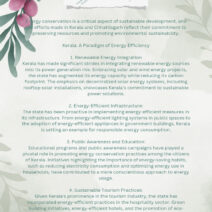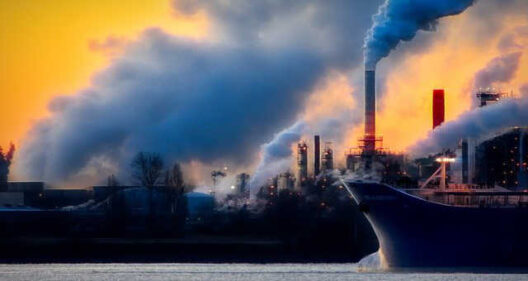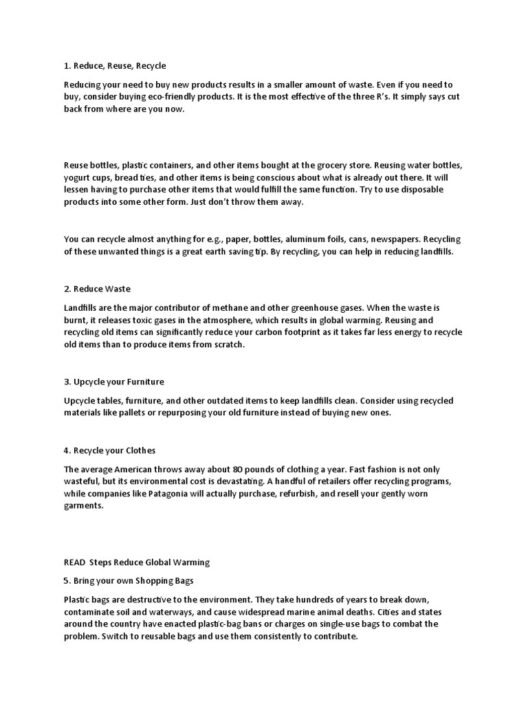Laredo, Texas, a city nestled along the banks of the Rio Grande, is grappling with the multifaceted and pernicious effects of global warming. As a community that combines the vibrant cultures of the U.S. and Mexico, Laredo offers a unique lens through which to examine the increasingly palpable impacts of climate change. Understanding these local manifestations of a global crisis reveals underlying reasons for our collective fascination with the climate’s trajectory and emphasizes the urgent need for concerted efforts toward sustainability.
One of the most immediate implications of global warming in Laredo is the escalation of extreme weather patterns. Historically marked by dry, arid conditions, the region is experiencing an increase in the frequency and intensity of heatwaves. Summer temperatures, which have climbed to alarming levels, create hazardous living conditions, particularly for vulnerable populations. The disproportionate impact on low-income communities, who may lack adequate access to cooling resources or air conditioning, highlights the broader social inequities exacerbated by climate change. This phenomenon underscores a critical observation: climate change is not merely an environmental issue; it is intertwined with economic justice and public health.
As temperatures rise, so too does the likelihood of drought. Laredo’s agricultural economy, heavily reliant on consistent rainfall, is at risk. Farmers are faced with dwindling water supplies, forcing them to adapt rapidly. Crops that once thrived under predictable weather patterns now experience unpredictable yields, impacting food security within the community. The agricultural sector’s struggles in Laredo exemplify how climate change reverberates through local economies. An ongoing drought can precipitate a chain reaction, where farmers yield less, food prices rise, and consumers bear the brunt of these changes.
Moreover, the increased heat exacerbates air quality issues. The region, which occasionally grapples with dust storms and particulate matter, faces an uptick in respiratory ailments. Ozone levels, already perilous during the summer months, are projected to worsen as temperatures soar. Vulnerable populations, including children and the elderly, face heightened risks. The intersection of climate health and public health is undeniable, demanding attention and action at both local and global scales.
Of particular concern is the ecological disruption inflicted on local habitats and ecosystems. The scorching temperatures and changing precipitation patterns endanger the rich biodiversity of the region. Laredo serves as a vital corridor for migratory birds and local wildlife, but as climate changes disrupt their traditional habitats, species face extinction. The ripple effects of biodiversity loss extend beyond the natural world; they affect human communities that rely on healthy ecosystems for everything from recreation to natural resource exploitation. The intricate web of life that sustains us is delicately balanced, and the effects of climate change risk striking at its very foundation.
The sociocultural fabric of Laredo is also woven tightly with the environment. Community members possess rich traditions and knowledge about their surroundings, passed down through generations. However, the pressures of climate change threaten to erode this heritage. As landscapes transform and resources dwindle, traditional practices may become increasingly untenable. This observation compels reflection on the role of cultural identity in the climate narrative; our relationship with the environment profoundly shapes who we are as individuals and communities.
Additionally, Laredo’s proximity to the U.S.-Mexico border invites scrutiny of climate migration. As climate change displaces populations across the globe, the complexities of immigration policy become entwined with environmental degradation. Laredo finds itself on the frontlines of these discussions, with climate refugees potentially seeking refuge from deteriorating environments elsewhere. These interactions provide a poignant reminder that climate change transcends borders, affecting human lives irrespective of nationality.
Addressing Laredo’s climate challenges necessitates local, innovative solutions grounded in collaboration and community engagement. Enhancing urban resilience is essential, encompassing strategies such as sustainable water management, green infrastructure development, and the promotion of renewable energy sources. There is a pressing need for educational initiatives that foster climate literacy and encourage civic participation. Residents must be equipped with knowledge to adapt to the changing climate, advocate for policy reforms, and participate in mitigation efforts.
The transformation of Laredo into a city that proactively addresses climate challenges can serve as a model for other municipalities facing similar circumstances. By integrating sustainability into all facets of city planning, from transportation to housing, Laredo can become a beacon of hope amidst a concerning global narrative. Investment in research and community-based projects can amplify local voices and promote resilience.
In conclusion, Laredo’s experience encapsulates the broader implications of global warming, serving as an instructive case study in the complexities of climate change. The issue conveys critical observations regarding public health, economic justice, and cultural heritage while prompting deeper inquiry into our interconnectedness. As climate change manifests within local realities, the urgent call to action grows louder. Effective responses will synthesize scientific understanding with community needs, supporting Laredo’s evolution into a resilient and sustainable city in the face of climatic upheaval.








